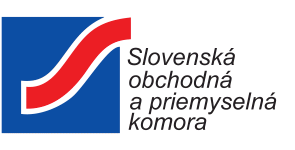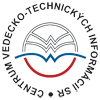Summary:
Established Slovak scientific and research institute in cooperation with a private company has successfully managed to prepare unique polymer composites for 3D printing consisting of a polymer matrix and a filler, whereby as the polymer matrix recycled polyethylene terephthalate glycol (rPETG) is used and the filler is a mixture of expanded graphite and carbon fibers in a suitable ratio.
The preferred cooperation types are license agreement, financial agreement or commercial agreement.
Description:
Currently, several principles of 3D printing are known which procedure have been gradually developed and improved. The most commonly used is the FFF (Fused Filament Fabrication) or FDM (Fused Deposition Modeling) method. The principle of this method is that the filament is fed into the nozzle and the resulting melt is applied on the pad in repeated thin layers until a three-dimensional object of desired shapes and dimensions is created. The materials used for filaments are predominantly polymeric materials differing in their mechanical and thermal properties (e.g. acrylonitrile butadiene styrene, polylactic acid, polyethylene terephthalate and others). In addition to polymeric materials, the filaments can also contain various additives (wood flour, ceramic particles, graphene, etc.) which serve to improve the mechanical properties or the appearance of the material. Their disadvantage is that they significantly affect the rheological properties of the melt or have abrasive properties on the nozzles which can lead to their wear and more frequent replacement. Recently, a team of inventors from an established Slovak research institute and a successful Slovak company managed to use recycled polyethylene terephthalate glycol as the polymer matrix of the material for 3D printing, which has in comparison with polyethylene terephthalate a higher impact resistance and clarity. Due to the fact that it is a recycled material, its price is several times lower than the price of non-recycled polyethylene terephthalate. Furthermore, this fact did not reflect in the properties of the resulting 3D object. For the purposes of improving the mechanical properties (static and dynamic) and reducing the weight of the final product, carbon fibers in a suitable ratio with expanded graphite have been mixed into this polymer matrix. Expanded graphite, that has lubricating effects, also reduces the abrasive properties of carbon fibers, improves the rheological properties of the polymer melt with carbon fibers and adds fine roughness to filaments, resulting in an easier feed into the nozzle. Thanks to the high thermal conductivity of the expanded graphite it is not necessary to change the temperature parameters of the processing.
The institute and the company are looking for partners to cooperate with via financial agreement, license agreement or via commercial agreement with technical assistance
Type (e.g. company, R&D institution…), field of industry and Role of Partner Sought:
Type: The institute and the company are looking for partners to cooperate with via financial agreement, license agreement or via commercial agreement with technical assistance..
Field of activity: 3D printing, especially the production of high performance materials for automotive industry
Role of partner:
financial agreement - the financing for the further development of this technology is sought,
license agreement - a partner for licensing of this technology is sought,
commercial agreement with technical assistance is sought.
Stage of Development:
Prototype available for demonstration
IPR Status:
Other
Comments Regarding IPR Status:
Registered Slovak utility model
External code:
TOSK20210316003








